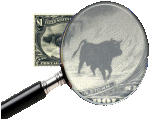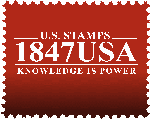
One-Cent Franklin Bank Notes
The Secret Mark and the Reengraved Design
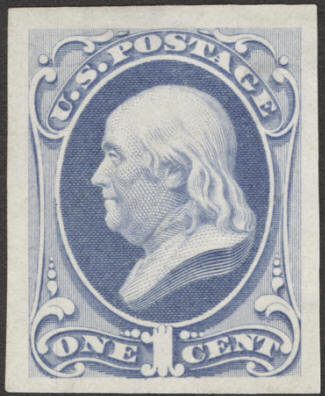
Scott 145P3 - National Printing
Original Design - Proof on India
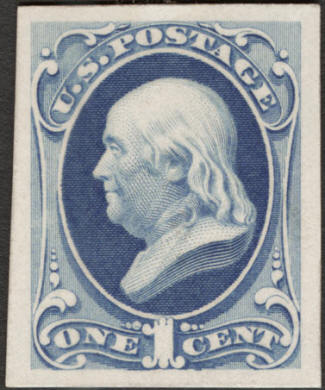
Scott 156P4 - Continental Printing
Original Design - Proof on Card
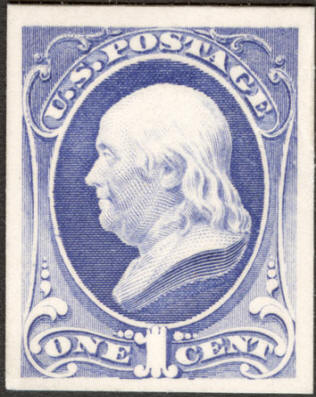
Scott 206P4 - American Printing
Reengraved Design - Proof on Card
Closeup of the Secret Mark
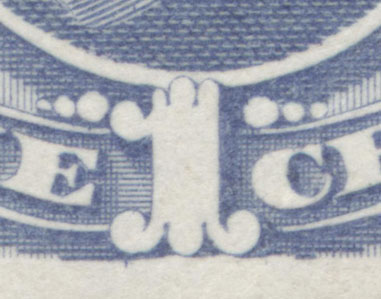
Scott 134 and Scott 145 - No Secret Mark
National Printing - There is no dash in the scroll ball
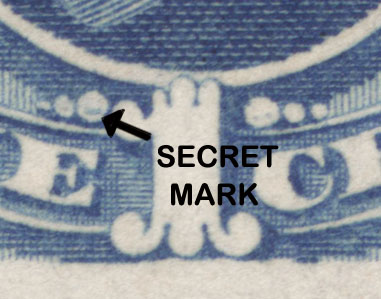
Scott 156 and Scott 182 - With Secret mark
Continental & American - There is a dash in the scroll ball
Closeup of the Reengraved Identifying Area
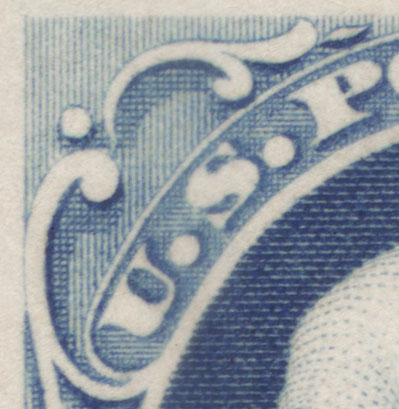
Scott 134, 145, 156 and 182 - Original Die
No Shading in the Ornament Above "U.S."
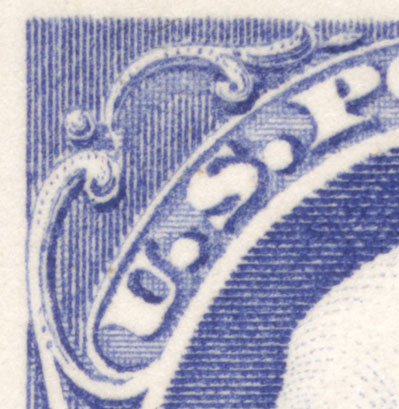
Scott 206 - Reengraved Design
Shading in the Ornament and Frame Above "U.S."
Follow these steps in the identification of your one-cent Franklin Bank Notes:
Determine the type of paper the stamp was printed on. If it was printed on "hard white" paper it is either a National or Continental printing. If it was printed on "soft porous" paper, it is an American printing.
If it was printed on the hard white paper, check for the "secret" mark. If it has the secret mark it is the Continental Bank Note stamp, Scott 156. Make sure there is absolutely no blue in the ball left of the numeral "ONE". Even the slightest hint of a blue dash will relegate this stamp to Continental or American status, since the secret mark often is very light. The one-cent Continental stamp is known with grill, but this stamp is very scarce. If you think your Scott 156 has a grill, i.e. Scott 156e, you must have it certified.
If the stamp was printed on the hard white paper and does not have the secret mark, it was printed by the National Bank Note Company. If the National stamp has a grill, it may be Scott 134. If it does not have a grill it is Scott 145. Care must be taken when authenticating the grill. Many fake grills have been added over the years in an attempt to increase the value of the stamp. Scott 134 is common enough that it may not be necessary to certify all copies, but nicely centered, fault-free, and particularly unused stamps should be certified.
If it was printed on the soft porous paper, compare the area near the arabesque in the upper right corner with the illustrations above to determine whether it is the original design or the reengraved design.
Watch also for removal of the secret mark by scraping, for re-perforation (to fake a more well-centered stamp), for re-gumming (a major problem with the Bank Notes), and even for bleaching of the cancellation (to remove the cancel).
The Special Printings, Scott 167 and Scott 192, are mentioned here merely for completeness. Only 388 copies, total, of Scott 167 and Scott 192 were sold, and they were never issued for postal use, rather for collectors only. We occasionally see uncertified copies of these stamps offered for sale at ridiculously low prices. You can rest assured that the stamp being offered is not genuine. These stamps are so rare, only 70 copies are known, they seldom come up for sale except in the sale of a major U.S. Collection.
The colors illustrated above are the colors of the issued proofs, which were in general issued after the stamps, with the first cardboard prrofs issued in 1879. Scott lists the main color of the hard paper one-cent stamps as ultramarine with many sub-shades and the soft paper, American, stamps as dark ultramarine for the original die, Scott 182 and gray blue for the reengraved stamp, Scott 206, both with sub-shades. Note that the india proofs in general have a sharper look than those proofs printed on the softer cardboard as evidenced above.
